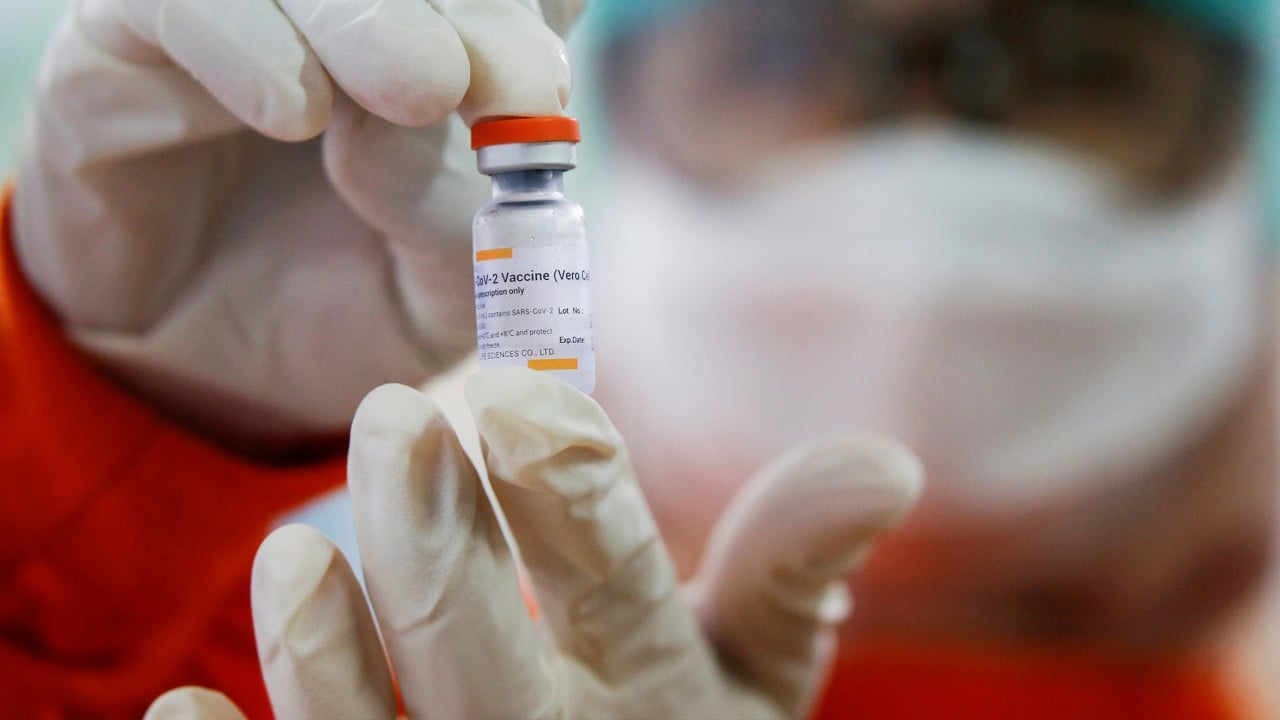
Explainer | Lab leak or nature? Debate heats up on the origins of Covid-19 virus
- Calls are growing to investigate whether the pathogen came from a laboratory studying bat viruses in Wuhan
- The US president, the WHO chief, and governments across Europe are backing the scientists who want more information
At the heart of the controversy is whether the pathogen could have come from a laboratory studying bat viruses in Wuhan, the Chinese city where the first known outbreak occurred.

05:08
Nature or lab leak? Why tracing the origin of Covid-19 matters
“As long as we have this question mark, all the theories stay on the table, unless you can prove one,” said Wanda Markotter, a virologist and the director of the Centre for Viral Zoonoses at South Africa’s University of Pretoria.
“If we can find this virus somewhere, in an intermediate host or a wildlife host, and it’s the same virus, then that will end the discussion, but until we have that, this discussion will continue, because it’s been so devastating and governments are extremely frustrated,” she said.
“Everybody wants a clear answer and we just don’t know. We have absolutely no data on where this came from.”
Singapore sequencing finds delta variant is major local Covid-19 strain
Lab leak?
In the absence of evidence of an intermediate animal that carried the virus, the spotlight has fallen back on theories about whether the virus could have first infected scientific researchers working with bat viruses. Speculation ranges from whether a virus collected in the field could have leaked, to the far more controversial suggestion that it may have been the product of lab manipulation.
While it is not the only laboratory in Wuhan that studies bat coronaviruses, international suspicion has most consistently fallen on the Wuhan Institute of Virology (WIV), a leading research institute into these pathogens.
According to published data and statements from researchers affiliated with the lab, there was no virus at WIV close enough to be a direct ancestor of Sars-CoV-2, and therefore no possibility that the outbreak was caused by a leak.
Last February, after Sars-CoV-2 was genetically sequenced, the WIV researchers said they checked their stored virus samples and found its closest known relative, a bat virus collected in 2013 in southwestern China. On an evolutionary timescale, there were decades of difference between the two viruses, making it clear the stored version was not a direct ancestor of the new coronavirus.

01:56
WHO ends Covid-19 mission in Wuhan, says lab leak ‘extremely unlikely’
But a further disclosure by the lab in November reignited suspicions, when researchers confirmed a detail unearthed by reporters and internet sleuths that the bat virus had been collected from a mine which they explored after local workers fell ill with a severe respiratory disease.
The scientists said a bat virus was never established as the cause of the illnesses, but the delay in providing the backstory to the stored relative of Sars-CoV-2, along with China’s refusal to open up the lab and its records for independent assessment, contributed to the renewed focus on WIV.
Another possibility put forward is that a WIV researcher could have been infected with Sars-CoV-2 during a scientific expedition, despite wearing protective gear. According to Juergen Richt, a professor at Kansas State University’s College of Veterinary Medicine, this explanation is “viable”.
“You might fall down on slippery surfaces, your mask protection might not be 100 per cent, you rip your gloves, you catch a bat and you might even get bitten by a bat,” he said.
As India’s coronavirus hell eases, new killers emerge
A report by The Wall Street Journal in May reignited earlier claims by the US State Department that three WIV researchers had been hospitalised in the month before the outbreak – raising questions about the lab’s assurances that it was not aware of any unusual illnesses that could have been the start of the eventual pandemic. The report was rejected by WIV and Beijing.
Engineered virus?
Researchers at WIV are also among a small group around the world that have experimented with retrofitting engineered bat coronaviruses with parts from other bat viruses, to see which ones are capable of infecting human cells, according to their published research.
This has led to questions from some scientists, commentators and politicians about whether this kind of work may have been responsible for the creation of Sars-CoV-2. But it is not widely viewed as credible, based on current information about viruses in the lab.
David Robertson, head of viral genomics and bioinformatics at the University of Edinburgh, said changing the closest known relative of Sars-CoV-2 to create the new virus would be “next to impossible”, given the number of differences across the genome.

01:30
WHO approves Sinovac Biotech’s coronavirus vaccine for emergency use
But doubts may linger about the lab and its viruses until more information is made available by the institute, or others in Wuhan, experts say.
Lab-related outbreaks have been known to happen in other countries and many scientists who focus on emerging infectious diseases agree that further evaluation of these theories is warranted.
“Maybe if we put more scientific data on the table it would give more confidence [that the virus did not come from there],” Markotter said. “I haven’t seen a proper study of what’s been done in that lab.”
However, scientists stress the long history of viruses arising from natural human contact with animals – and that such contacts are increasing as human and livestock populations expand into wildlife areas.
No intermediary animal between bats and humans has yet been identified. In contrast, it took months for researchers to pin China’s Sars outbreak of two decades ago to civet cats sold in food markets.
The Wuhan wet market linked to an early Covid-19 cases was cleared out, sanitised and closed before a full investigation could be mounted. China also banned the trade of wildlife for food weeks after the outbreak, closing farms and culling animals.
Animals hunted, traded and homeless host twice as many viruses that infect us
Some of the wild animal farms which supplied Wuhan were located in the southern areas of China where related bat viruses have been found, but animals and people on those farms have yet to be investigated, according to the WHO team that visited Wuhan this year.
Instead, Chinese scientists tested available and new samples from tens of thousands of animals from hundreds of species across Wuhan’s surrounding Hubei province and elsewhere in the country, but found no match. Some experts say the sample size may have been too broad.
According to Robertson, it is also possible that the virus could have jumped directly from bats to people, indicating that “rather than needing to adapt to humans, a virus has evolved in the bats that can infect multiple species, of which we’re just one”.
Scientists also generally believe the virus was circulating in people for some time before it was noticed. This could mean investigators are looking for clues in “completely the wrong place”, said Markotter at the University of Pretoria.
US and EU to back investigation into origins of coronavirus
However, looking for more viruses in nature could yield more information about the origin of Covid-19, Markotter said. Since the start of the outbreak, a handful of bat viruses related to Sars-CoV-2 have been newly documented in China and Southeast Asia.
These discoveries begin to fill wide gaps in the family tree and also indicate how much swapping of parts happens naturally between these viruses, according to Robertson. “These new viruses – that very much support a natural origin – are being missed in the conversation,” he said.
Meanwhile, the search for evidence goes on, Markotter said. “We are going to sit with this question about the lab continuously, because we can’t show anything else, and the reality is we haven’t found a closer virus in wildlife or in any other animal that could have been responsible for the outbreak.”

